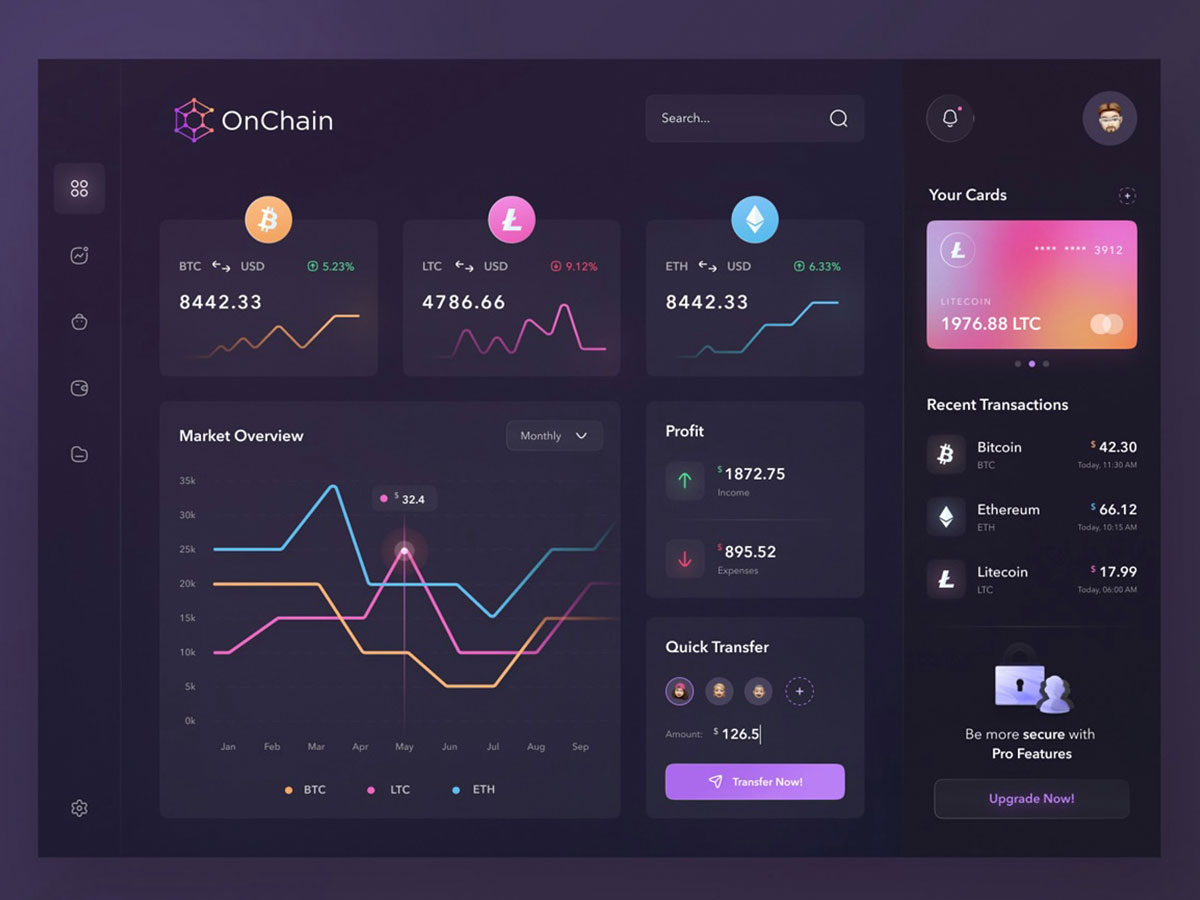Spellbrand Blog
How to Become a Mega Brand

How to Become a Mega Brand: It’s a reality of commerce: certain brands rise to the top and…just stay there. What are they doing that you aren’t? How did they reach such a vaulted position, and how have they prevented the collapse that seems so inevitable for other brands?
In this post, we’ll explore some of the biggest brands with an eye on how you can emulate their success. Read on.
What All These Brands Have in Common
Before we look at the individual brand stories, let’s take a moment to discuss what these brands all did right. After all, if we can identify these key factors, it may be easier to emulate the perception.
#1 Differentiation
All successful brands take the effort to differentiate themselves from the competition. The most enduring brands get this right from the start. Think about the following:
- Ikea
- Whole Foods
- Nike
- Zappos
These brands play by their own rules. They invent. They enhance. They weren’t carbon copies of any pre-existing brands, nor were they going off of some sort of For Dummies playbook for their particular business model or type.
#2 Connection
Great brands create a gut-level connection with their customers. They create fans, and they generate brand ambassadors.
M_’m m’m Good!_
What does that slogan evoke in you? It may make you think of a hot bowl of soup on a frosty, dismal winter’s day. That’s partly because of effective advertising, but it’s also part of Campbell’s genuine brand story—their legacy.
The argument could be made that brand story is what is propping Campbell’s Soup up amid staunch competition from competitors such as Progresso, Amy’s and Pacific foods. Most of us just feel something for the company. That feeling is nostalgia, and it can mean real money.
#3 Brand Promise
All great brands make good on the promises they make. You know what your product is, but do you know what it stands for? Think about Red Bull. If they released a line of sleep aids, that would feel a bit off, wouldn’t it? Doing so would be out of alignment with their unstated promise of helping people feel alert, energetic and alive.
Or, for a more poignant example of branding gone wrong, look into the travesty that was New Coke.
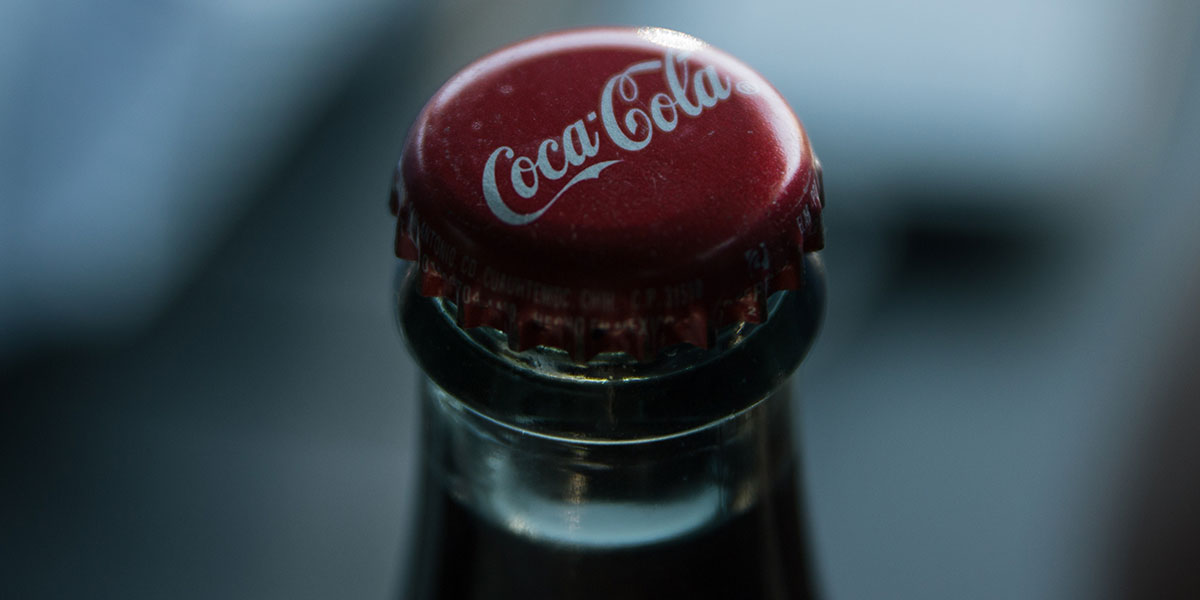
What We Can Learn from the Big Names
Companies like Coca-Cola, Wal-Mart, and eBay use their legacies as engines to drive sales and to pave the way for new offerings. These companies are so huge that they’ve become household names. Their brands are so powerful that they could probably coast on existing products or business models for a century or more—though, in the case of Coke, more and more parents are crying out about sugary beverages and the potential harm they can do. This is an issue that the company will have to deal with sooner rather than later.
In any event, these are but a few of the mega brands that dot the commerce landscape. Let’s examine their stories to see what we might learn from them.
#1 Cocoa-Cola
Revenue in 2018: $31.9B
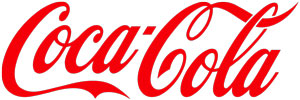 Coca-Cola began life as the producer of a carbonated beverage with a…special ingredient. In 1886, cocaine was used medicinally and recreationally as a stimulant. While the modern-day version of the company denies that the original formula contained cocaine, contemporary reports provide significant evidence that it did. Depending on how you look at it, the company may be completely honest when they refute the claim, as technically, the formula changed hands several times before the company went public, giving rise to the corporate entity we know as the Coca-Cola Company.
Coca-Cola began life as the producer of a carbonated beverage with a…special ingredient. In 1886, cocaine was used medicinally and recreationally as a stimulant. While the modern-day version of the company denies that the original formula contained cocaine, contemporary reports provide significant evidence that it did. Depending on how you look at it, the company may be completely honest when they refute the claim, as technically, the formula changed hands several times before the company went public, giving rise to the corporate entity we know as the Coca-Cola Company.
However, it’s worth noting that at the time, cocaine was considered to be a technological triumph. In fact, in 1884, cocaine was the only recognized local anesthetic. Whether or not that qualifies the original Coca-Cola formula as a medicinal drink is beyond the scope of this post. What is known is that by 1903, the controversial ingredient had been removed from the formula. By 1929, the formula resembled its current state.
Since then, the brand has ascended to truly astronomic heights. Today, people in over 200 countries consume a combined 1.9 billion servings of the stuff every single day, according to the company website.
But just having a product that people love isn’t enough to create an enduring legacy.
From the start, the company focused on its core offering, providing the public with a product that was in demand at the time: coca wine. Coca wine was a mix of alcohol and cola. The combination was a success, however, in 1886, Atlanta passed laws that required beverage manufacturers to provide ‘soft’ versions of their alcoholic, or ‘hard,’ drinks.
These ‘soft’ drinks were often sold in pharmacies, where they were a big hit. Coke’s creator, John Pemberton, and his nephew Lewis, often visited these pharmacies to get feedback on their formula. This early market research provided the bedrock for the company’s success.
Today, the true Coca-Cola formula—as opposed to what you may see listed as the ingredients, on the label—is locked in a safe in company headquarters.
Another aspect of the company’s success is its immortal font and logo. The logo was largely designed by Frank Mason Robinson, Pemberton’s bookkeeper. Robinson chose the timeless Spencerian script, often used by accountants, for its font. This was a strategic choice at the time, as it instantly differentiated the brand from other soft drink manufacturers. The logo was slightly reworked in 1923 and has remained mostly intact since.
The result?
A lasting legacy with a roughly 100-year history. Now that’s staying power.
Going back a bit, when Asa Griggs became the primary stockholder of Coca-Cola in 1888, he spun his wheels in frustration looking for ways to set the brand apart. More and more soda manufacturers were cropping up, and while the Coke formula was a closely guarded secret, the flavor wasn’t exactly impossible to emulate.
But in 1915, Griggs was hit with an inspiration. He launched a contest for the best new Coke bottle design. The goal of the contest was to create a bottle design that would convey to the average customer that Coke was a Ruler archetype, not to be confused with any regular ol’ cola. The caveats were few: the company must be able to mass produce the bottle with existing equipment, and the bottle design must be completely unique.
The winner of the contest was Earl R. Dean, who based his design roughly on the shape of the cocoa pod. Ever since the bottle’s distinctive shape has been as important a piece of branding for the company as its logo.
Further cementing Coca-Cola as a world leader of beverage producers, the company held its partners to a high standard. This became evident in 1919 when Ernest Woodruff bought the company. Through internal research, the new owners deduced that the ideal temperature for Coca-Cola was precisely 36 degrees Fahrenheit. Subsequently, they decreed that retailers must serve the drink at this temperature. Furthermore, selling the drink above 40 degrees Fahrenheit was an absolute no-no.
Rather famously, the company sent salespeople and other representatives to check on retailers, ensuring they were following this protocol. Why? Because the integrity of the brand was at stake. This level of what some may call nitpicking also helped the company differentiate its product from the competition.
The company knew it had a solid product, and they knew they were differentiating themselves. The big question was, what else could they do to scale? How could they make Coca-Cola a household name as quickly as possible?
The answer: charge just five cents for a bottle of coke. Amazingly, this policy held from 1886 to 1959.
In addition, from 1887 to 1920, the company offered a coupon program that resulted in around 10 percent of the product being given away for free. As you might imagine, this helped jumpstart brand awareness. What’s more, in an early example of merchandising, the company also gave retailers free Coca-Cola ‘swag.’
Finally, the company adopted a standardized marketing design style early on. The same design elements were used for both national and international marketing assets.
Arguably, the company’s one major stumble of note was the disastrous rebranding that was New Coke. However, note how quickly the company rebounded. That is the power of a strong brand.
#2 Wal-Mart
Revenue in 2018: $500.343B
 Today, most of us take the giant ‘by it all here’ stores for granted. But before Wal-Mart and stores like it, if you needed both a bagel and a hammer, you were going to two different stores. While today, Wal-Mart is seen as an institution that is, well, merely there, it was, in its heyday, very innovative.
Today, most of us take the giant ‘by it all here’ stores for granted. But before Wal-Mart and stores like it, if you needed both a bagel and a hammer, you were going to two different stores. While today, Wal-Mart is seen as an institution that is, well, merely there, it was, in its heyday, very innovative.
Today, the company employs 2.1-million people and operates around 8,500 stores. Every week, over 200-million customers visit Wal-Mart stores around the world.
But only 50 years ago, Wal-Mart was a five-and-dime store. The store was founded by entrepreneur Sam Walton, who had a vision of building a large chain of department stores. Walton’s vision included the notion of focusing on rural customers, customers who were largely ignored by existing chains. His stores would give these rural customers more of the ‘one stop shop’ experience enjoyed by city slickers.
What Walton learned from his early endeavors, including from the Ben Franklin store he started in 1945, was that if you increased sales volume by cutting prices, you could still come out well ahead. Famously, or infamously, this strategy also allowed him to undercut competitors.
He tested this concept with the Ben Franklin store, increasing revenues from $80,000 to $225,000 in three years. Unfortunately, due to a not so iron-clad lease, he lost the store location because the landlord wanted his son to have it.
Walton’s next store was Walton’s Five and Dime. He applied the same sales volume tactic there, eventually ballooning into a 14-store enterprise.
In 1962, after refining his model over two decades, Walton opened the first Wal-Mart in Rogers, Arkansas. It took only six years for the innovative store to earn enough revenue to justify a second store. In 1969, Wal-Mart went public.
What can we learn from Wal-Mart?
For one thing, Walton knew the value of a dollar, and he knew how to endear himself to customers. According to Walton, every time Wal-Mart spent a dollar ‘foolishly,’ they were costing their customers a dollar. Yet when they invested in their business wisely, they saved their customers money. This simple idea, repeated over and over, is how Walton built the retail industry behemoth we know today.
Legend has it that Walton learned about retail from his barber. He wasn’t a retail genius or a marketing guru. He learned about the business model from someone else. Then he improved upon it. If you’ve found improvement or optimization and are sure you can implement it well, why are you hesitating?
As Walton said, the most important ingredient of success is to believe in your concept more than anyone else does.
Before Walton cut ties with the Ben Franklin franchise, he offered them a partnership that would have allowed them to get in on the ground floor of Wal-Mart. They turned him down because Walton wanted them to cut their margins far lower than they were accustomed to. They didn’t buy into his vision of increased volume, and they missed the proverbial boat.
No one will believe in your concept as much as you do, so don’t wait for permission to get started.
Finally, Walton was a subscriber to the philosophy that he was the sum of the five people he spent the most time with. Or, put another way, he knew that Wal-Mart as a company would grow or wilt depending on who was at the helm. Consequently, he spent a great deal of time and energy recruiting the best people for his management team. When he traveled with his executives, he made a point of putting people two to a hotel room, which he believed encouraged brainstorming sessions.
#3 eBay
Revenue in 2018: $10.7B
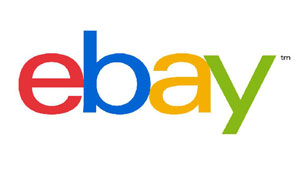 Jumping ahead in time a bit, we have eBay. eBay started life as AuctionWeb, in 1995. The company’s founder, Pierre Omidyar, got the idea for the site from his girlfriend’s Pez dispenser plight. You see, she was unable to easily expand her collection of Pez dispensers because sellers were hard to find. She had to comb through trade magazines or classified sections to find someone, and then she would have to travel to inspect the seller’s items.
Jumping ahead in time a bit, we have eBay. eBay started life as AuctionWeb, in 1995. The company’s founder, Pierre Omidyar, got the idea for the site from his girlfriend’s Pez dispenser plight. You see, she was unable to easily expand her collection of Pez dispensers because sellers were hard to find. She had to comb through trade magazines or classified sections to find someone, and then she would have to travel to inspect the seller’s items.
But eBay would change all that.
One of the smart plays by Omidyar—one of many—ways to make the site free to use, initially. This allowed him to attract new customers and to grow the brand. Keep in mind that in 1995, e-commerce was a concept in its infancy, and it had its critics.
Many detractors claimed that the idea of putting credit card info online was ludicrous, and many consumers agreed—at the time. By making the service free initially, the founder avoided that first hurdle entirely while exposing consumers to his concept—the ease at which they could now buy and sell items online.
However, it wasn’t long before traffic to the site exploded, and Omidyar’s hosting service bumped his monthly bill to $250 to compensate. In today’s money, that would be around $420. Since the site was costing him a non-trivial amount of money to operate, Omidyar felt the time was right to start charging.
The initial fee scale was similar to that used today. Customers could place a listing for a small fee, around ten cents, and then eBay would collect a small percentage of the final sales price.
Initially, Omidyar didn’t have a payment processor, so he received payments via mail—and sometimes those payments came in the form of nickels and dimes taped to index cards or shoved into envelopes. Regardless, he had a real business model on his hands, and it wasn’t long before it was growing exponentially.
In the first month of charging, eBay earned over $1,000. Sadly, this was not a profit. The second month, however, the site earned $2,500, and in the third, it raked in $5,000.
When the fourth month brought in $10,000, Omidyar quit his day job.
Over the years, eBay has cemented its reputation as an innovator in the online auction space, offering features that boil down to:
- Personalize the customer’s journey
- Give the customer the agency to choose which products they want to see
- Yet still, offer recommended items within categories the customer has subscribed to
This focus on the customer experience has helped eBay remain top of mind in its space. In addition, the company pioneered the online review and feedback system, which was critical for building trust and helping consumers embrace ecommerce. Amazon may have perfected the practice, but eBay was the pioneer here.
On eBay, both sellers and buyers are judged by their feedback, and it’s a fair system all around. Early on, eBay established a grading system of:
- Positive
- Neutral
- Negative
They also allowed both sellers and buyers to leave written feedback in addition to assigning the values above.
The takeaway?
Don’t be afraid to give your customers a way to provide feedback, especially if you run an online marketplace. Feedback is a crucial part of the process, as it builds trust. Folding this mechanic into your business early can help you build brand recognition as the added trust will bring customers flocking to you.
If you’re an ecommerce store, the takeaway here is to always feature reviews on sales pages. Why? The practice increases conversions. Consumers are inherently social, and they like hearing other people’s opinions about the products they’re considering.
One final trait of eBay that helped it stand out from early competitors was the personalized account it offered to both sellers and buyers. Early on, both buyers and sellers could send direct messages to one another, a virtually unheard of feature at the time. There is also a dedicated customer support staff on hand to settle disputes or help with other issues.
Again, these features went a long way in building consumer trust.
Honorable Mention: McDonald’s
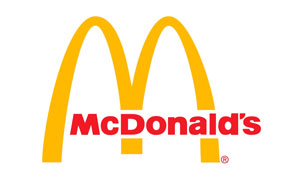 There is a delightful biopic about McDonald’s founder Ray Kroc entitled The Founder, so we won’t rehash the story here. But the short version is:
There is a delightful biopic about McDonald’s founder Ray Kroc entitled The Founder, so we won’t rehash the story here. But the short version is:
- Find something that everyone likes
- Make it better or more convenient
- Create one of the best logos of all time
- Next, package the product as a formula and sell that formula to franchisees
- Invest in real estate along the way
- At the same time, invest heavily in marketing

The Year 2018
Let’s shift gears now and examine a few more recent success stories—specifically, from 2018. These companies are rising stars, and they’re all setting themselves up to be enduring brands.
#1 Lyft
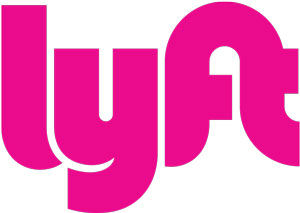 Uber, with its initial focus on business clients, left a hole the size of a small hybrid vehicle that another company could drive right through. In 2018, Lyft did just that, catering to everyday people. Lyft is now seen by many consumers as the friendlier, more socially-conscious alternative to Uber.
Uber, with its initial focus on business clients, left a hole the size of a small hybrid vehicle that another company could drive right through. In 2018, Lyft did just that, catering to everyday people. Lyft is now seen by many consumers as the friendlier, more socially-conscious alternative to Uber.
With their advertisements focusing on their ‘friendly’ drivers, Lyft is building significant brand awareness by playing on its main competitor’s scuffed reputation. Throughout 2016-2018, Lyft doubled its market share percentage, going from just 12 percent to 29 percent. In a still growing market, this is a significant jump.
What’s more, the company has expanded to over 20 markets around the world. While doing so, they have taken pains to ensure that they don’t impact communities in a negative way. This contrasts sharply with Uber’s reputation as a company that cares about profits first, and people second.
What can we learn from Lyft?
Ensure that your own brand story stands out from those of your competitors. Be bold, and be different.
#2 Tesla
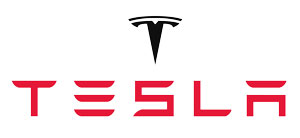 While the company has had its share of woes recently, it remains of the most innovative automotive producers. In 2018, the company suffered hacks, a Model S recall, and a fatal Model S crash. Regardless, well-to-do consumers line up by the thousands to give the company their money.
While the company has had its share of woes recently, it remains of the most innovative automotive producers. In 2018, the company suffered hacks, a Model S recall, and a fatal Model S crash. Regardless, well-to-do consumers line up by the thousands to give the company their money.
Despite numerous issues facing the company in 2018, company founder Elon Musk did not shy from risk. In one of the most talked about marketing schemes in history, Musk sent a Tesla into space aboard a SpaceX rocket.
What can we learn from Tesla?
Be creative, and think big. Brand building activities can pay big dividends down the line.
#3 Trulia
 Trulia is a search engine for renters, and if you’re looking for an example of content marketing done right, they should be your go-to. Their content is expertly researched and proficiently written, which led to massive traffic to their site over the course of 2018. The company is setting itself up as a Sage archetype in their space. Authority is a very real currency, as it can lead directly to sales.
Trulia is a search engine for renters, and if you’re looking for an example of content marketing done right, they should be your go-to. Their content is expertly researched and proficiently written, which led to massive traffic to their site over the course of 2018. The company is setting itself up as a Sage archetype in their space. Authority is a very real currency, as it can lead directly to sales.
For a good example of the type of quality content that can positively impact your bottom line, see Trulia Research.
What can we learn from Trulia?
It pays to be a thought leader. Authority can translate directly into sales. Become the go-to expert in your space.
I hope this concise post on the most enduring brands gave you ideas on how you can build your own. Let me know in the comments section below!

Mash Bonigala
Creative Director & Brand Strategist
With 25+ years of building brands all around the world, Mash brings a keen insight and strategic thought process to the science of brand building. He has created brand strategies and competitive positioning stories that translate into powerful and stunning visual identities for all sizes of companies.
Featured Work
See Our Work in Action
Real brands, real results. Explore how we've helped businesses transform their identity.
Client Love
What Our Clients Say
Don't just take our word for it. Hear from the brands we've worked with.
Joe Russell
VALENSOR
"Mash and his team were amazing. They were able to take our vision and produce a truly creative and unique branding package. What struck me most was their desire to make our company happy alongside ensuring our company has good branding. Mash was always willing to answer our questions and help us arrive at a decision. Overall, SpellBrand is not just creating company names and logos, they are creating character and soul for their clients' companies. I would recommend them to anyone looking to stand-out among their competitors. SpellBrand services are most definitely worth their weight in gold."
Josh Amburn
Lakefront Docks and Lifts
"I came into this project expecting to get the best logo for our brand. That’s exactly what I received. The team at SpellBrand used the descriptions of what we do along with a color palette of our site to design three amazing concepts. Once we decided on what worked best for our needs, they worked diligently to perfect the design. Their use of their project management software makes the collaboration painless. Great work team! We’ll see you on the next project! Josh"
Keep Reading
Related Articles
Nov 19, 2025
What Do You Need To Start An Online Business
Discover the essential elements needed to start a successful online business. From branding and website design to capital and self-discipline, learn what it takes to launch and grow your digital venture.
Read MoreNov 19, 2025
What are paths and anchor points in Adobe Illustrator?
Master the fundamentals of paths and anchor points in Adobe Illustrator. Learn how these essential tools work together to create professional logo designs and vector graphics.
Read MoreNov 17, 2025
Use Of Color In Creating Logo Designs
Master the psychology of color in logo design. Learn how colors influence perception, build brand recognition, and create emotional connections with your audience.
Read More
